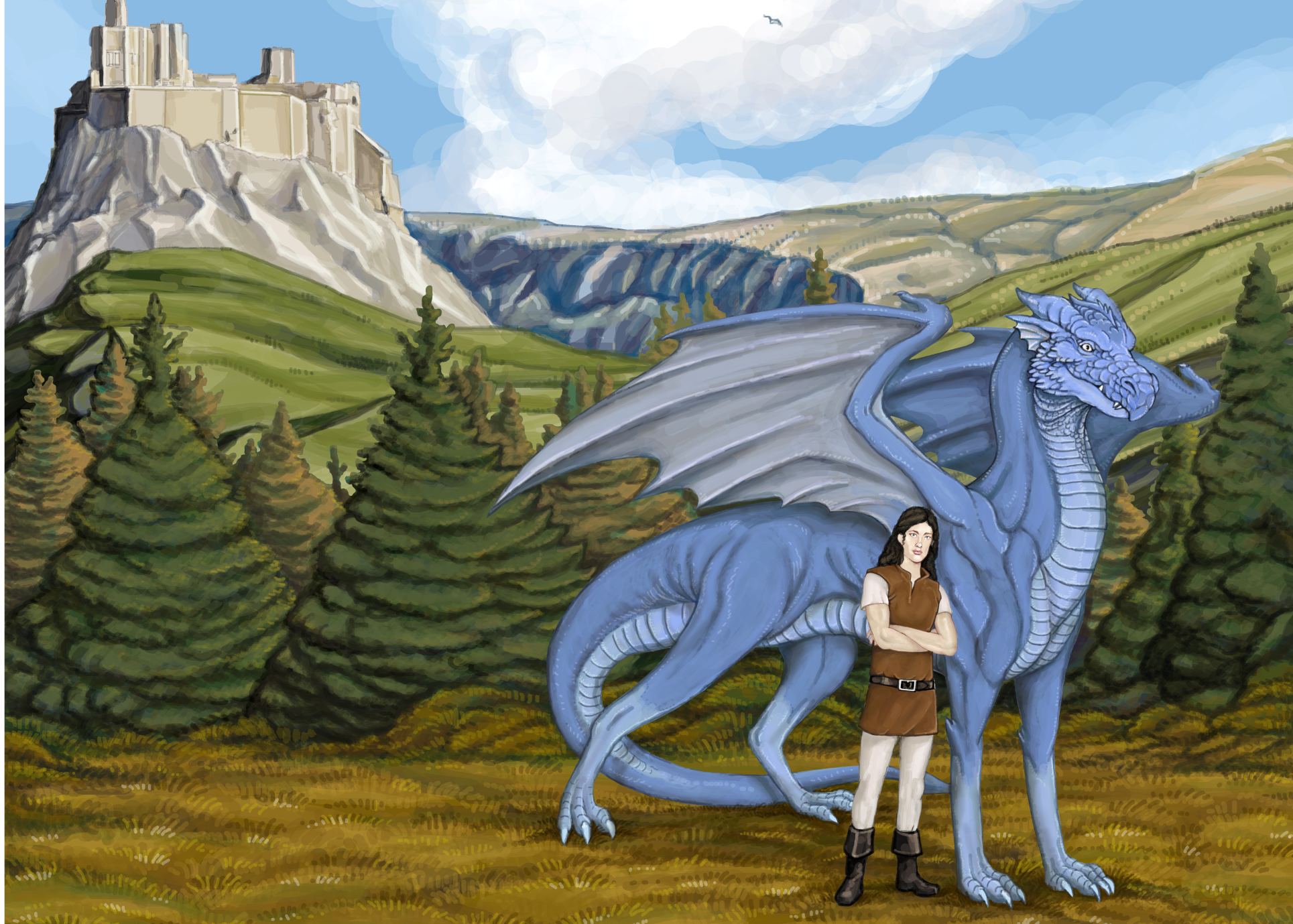Dragonfish
These fish are about the size of brook trout, with a very interesting flavour. They live only in Lake Veristo which is a large inland sea.
"Now Clark, remember once you have set the gaff hook do not look at the fish as you pull it out of the wat...." SPLASH "Boy overboard, hurry that is my son out there" "Cormac, I thought you would have taught him better before bringing him out to fish. Look at Jenny over there. Now she knows how to fish."
Basic Information
Anatomy
Dragonfish have two dorsal fins, the one closest to the head and gills is larger than the on two thirds of the way down the body. Both of these fins are capable of collapsing flat to the body when they dive deep. Their fins run through the red spectrum of colour starting with pink close to the body, darkening at it moves to the outer edges where it is a bright carnelian. This is true for the four fins along the side of the body as well.
The head of this particular fish happens to be an irridescent blue, which fades as it meets the body where the gills are. From the gills back to the tail the scales are prismatic. Depending on the direction the light hits them will change the colour that is visible. This does not mean they will appear any solid colour along the body but a rippling effect. This effect can be hypnotic causing those who are unwary to be pulled overboard by the struggling fish.
The head of this particular fish happens to be an irridescent blue, which fades as it meets the body where the gills are. From the gills back to the tail the scales are prismatic. Depending on the direction the light hits them will change the colour that is visible. This does not mean they will appear any solid colour along the body but a rippling effect. This effect can be hypnotic causing those who are unwary to be pulled overboard by the struggling fish.
Genetics and Reproduction
Dragonfish like other fish lay hundreds of eggs at a time, though only about thirty percent hatch. This is because other fish will eat the eggs when they find them. Of the thirty percent that hatch roughly fifty percent of those survive to adulthood. Of those that surive to adult, only forty percent lay more eggs due to the fishing of Dazzlikat and other wild predators who hunt them.
Growth Rate & Stages
The Dragonfish grow from fingerling to full size in about two years, if not caught by the fisherfolk of Dazzlikat. They can live up to fifty years if left in the wild.
Ecology and Habitats
These beauties are a freshwater species. They live where certain algae and 'seaweed' can be found.
Additional Information
Uses, Products & Exploitation
Dragonfish are caught for their oil, meat, and scales.
Oil:
The oil of the dragonfish doesn't turn rancid and is used in both cooking and lanterns. When burned in lanterns it gives off a light floral aroma reminiscent of lavender, soft and soothing. When used in cooking it adds a piquant spice to the dish, similar to cinnamon. Because of how hard it is to seperate the oil from the fish without ruining the meat each fisherman/woman gets a share of the catch for pressing into oil. This usually amounts to about 3% of the entire catch divied between the entire crew.Meat:
The meat of the fish needs to be prepared in a very specific way or it becomes like jerky. The jerky strips are sold to merchants as travel food. This is the result of pressing the oils out then hanging the strips of flesh in a smoke house. With proper preparation it becomes Likat. Those who live in Dazzlikat refuse to give out the recipe to non Dazzlins. Also each family has their own recipe for Likat.Scales:
The scales from the pressed fish are carefully collected and stored to be used in the crafting of wall art and jewellry.Geographic Origin and Distribution
The dragonfish prefer the deep waters of Lake Veristo, though there have been rumours of dragonfish being seen swimming up the river to the north-east side and into the mountains bordering Craglim Reach.
Scientific Name
Slavelinus Draconius
Conservation Status
Least concern
Average Weight
The average weight of harvested dragonfish is between five and fifteen pounds.
Average Length
The average length that the fisherfolk of Dazzlikat pull out of the water is between a foot and a half and two feet. They consider anything under that to be too small. There have been fish stories saying someone once caught a four foot dragonfish.
Geographic Distribution





Comments